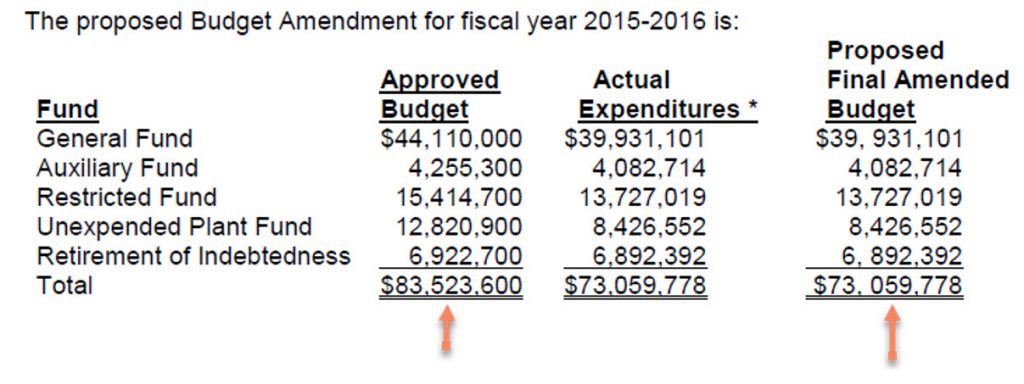Surplus headed to capital fund for buildings; no new educational initiatives or other options for excess revenue discussed
The College ended the 12-month fiscal year on June 30, 2017 with a $2.5 million surplus. When college administrators were asked by representative Deb McCasland how that surplus was to be used, they said it would be applied to future capital projects.
Overall the College explained that “General Fund revenues are projected to be below budget by $208,000 and expenditures are projected to be under budget by $2,736,000. Revenues are lower than budgeted due to lower fall and spring semester enrollments and the gradual reduction of the aviation program. Expenses are less than budgeted due to several factors including unspent contingency funds, vacancy savings, lower non-labor expenditures (i.e. utilities) and the utilization of available Proposition 301 monies (in lieu of General Fund monies).”
The College administrators did not offer the Governing Board any possible alternatives for the use of this excess surplus revenue. For example, to award faculty bonuses or develop additional educational programs. In fact, if representative McCasland had not raised the issue about the surplus, it would have been submerged in the consent agenda with no discussion at all.
You may click here to go to the August 2017 agenda where on page 20 of 154 you will see the surplus.
The Administration’s statement on use of the surplus is below.




 This is the information the Governing Board will have Tuesday, May 9, 2017 when the five County representatives vote on the 2017-18 College budget. If history is any indicator, the Budget will be rubber stamped by at least the West County voting bloc.
This is the information the Governing Board will have Tuesday, May 9, 2017 when the five County representatives vote on the 2017-18 College budget. If history is any indicator, the Budget will be rubber stamped by at least the West County voting bloc.